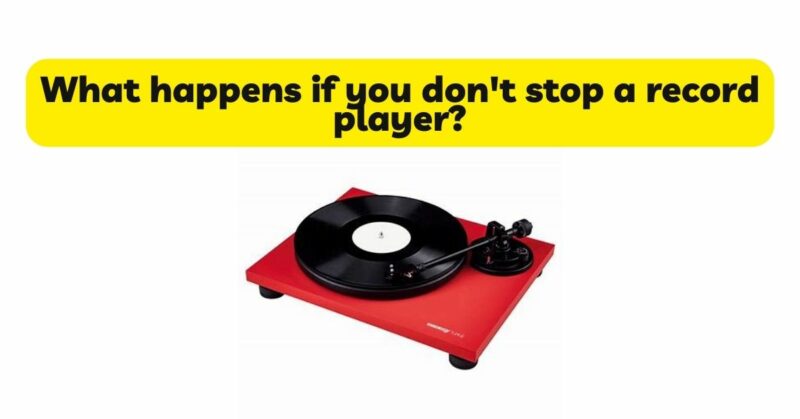For vinyl enthusiasts, the ritual of playing records on a turntable is a cherished experience. However, it is important to adhere to proper practices and understand the potential consequences of neglecting to stop a record player after use. In this article, we will explore what happens if you don’t stop a record player and discuss the implications for both the record and the turntable. Additionally, we will provide best practices for ensuring the longevity and optimal performance of your vinyl collection.
- Excessive Wear on the Stylus and Record:
Leaving a record player running without removing the record can result in prolonged contact between the stylus and the vinyl surface. This extended contact can cause excessive wear on both the stylus and the grooves of the record. Over time, this wear can lead to a degradation in sound quality, such as increased surface noise, distortion, or compromised tracking ability.
- Damage to the Record Surface:
Continuous rotation of the turntable without stopping can result in repeated passes of the stylus over the same section of the record. This repetitive movement can potentially cause damage to the delicate vinyl surface, including scratches, groove widening, or even the creation of a groove pattern known as “locking groove.” These issues can permanently affect the playback quality of the record.
- Motor Strain and Overheating:
Leaving a record player running continuously places strain on the turntable’s motor. The motor is designed to operate within specific temperature limits, and extended operation without a break can lead to overheating. Overheating can potentially cause the motor to degrade or fail prematurely, affecting the overall functionality of the turntable.
- Increased Power Consumption:
Leaving a record player running unnecessarily results in increased power consumption. This not only adds to energy costs but also contributes to unnecessary wear on the turntable’s components, including the motor and other electronic elements. Conserving energy and extending the lifespan of the equipment are important considerations for sustainable and efficient operation.
Best Practices for Operating a Record Player:
To ensure the longevity and optimal performance of both your record player and vinyl collection, follow these best practices:
- Remove the Record After Playback:
Always remove the record from the turntable immediately after playback. Gently lift the tonearm and carefully place it back in its resting position. Removing the record reduces the risk of unnecessary wear on the stylus and the vinyl surface, preserving the sound quality and longevity of both.
- Store Records Properly:
After removing the record from the turntable, store it in its protective sleeve. Avoid placing records face down on surfaces or exposing them to excessive heat, humidity, or direct sunlight. Store records vertically in a dedicated record storage unit or shelf to prevent warping or other physical damage.
- Regular Cleaning and Maintenance:
Implement a regular cleaning routine for both the turntable and your records. Clean the stylus with a soft brush or stylus cleaner to remove dust and debris. Use appropriate record cleaning solutions and brushes to keep your vinyl collection clean, ensuring optimal sound quality and prolonging the lifespan of the records.
- Proper Handling and Care:
Handle records with clean hands and hold them by the edges or the label area to avoid touching the playing surface. Mishandling or dropping records can cause physical damage, such as scratches or warping. Treat your records with care to maintain their condition and playback quality.
- Turn Off the Record Player When Not in Use:
To conserve energy and prevent unnecessary wear on the turntable, always turn off the record player when it is not in use. This practice helps extend the lifespan of the motor and other electronic components while reducing energy consumption.
Conclusion:
Neglecting to stop a record player after use can have significant consequences for both the record and the turntable. Prolonged contact between the stylus and the vinyl surface, potential damage to the record’s grooves, motor strain, overheating, and increased power consumption are among the risks associated with continuous operation. By adhering to best practices such as removing records after playback, proper storage, regular cleaning, and conscientious handling, you can ensure the longevity and optimal performance of your vinyl collection. Treat your record player as a valuable piece of equipment, and by doing so, you will enjoy the full audio experience while preserving the integrity and longevity of your cherished vinyl records.


